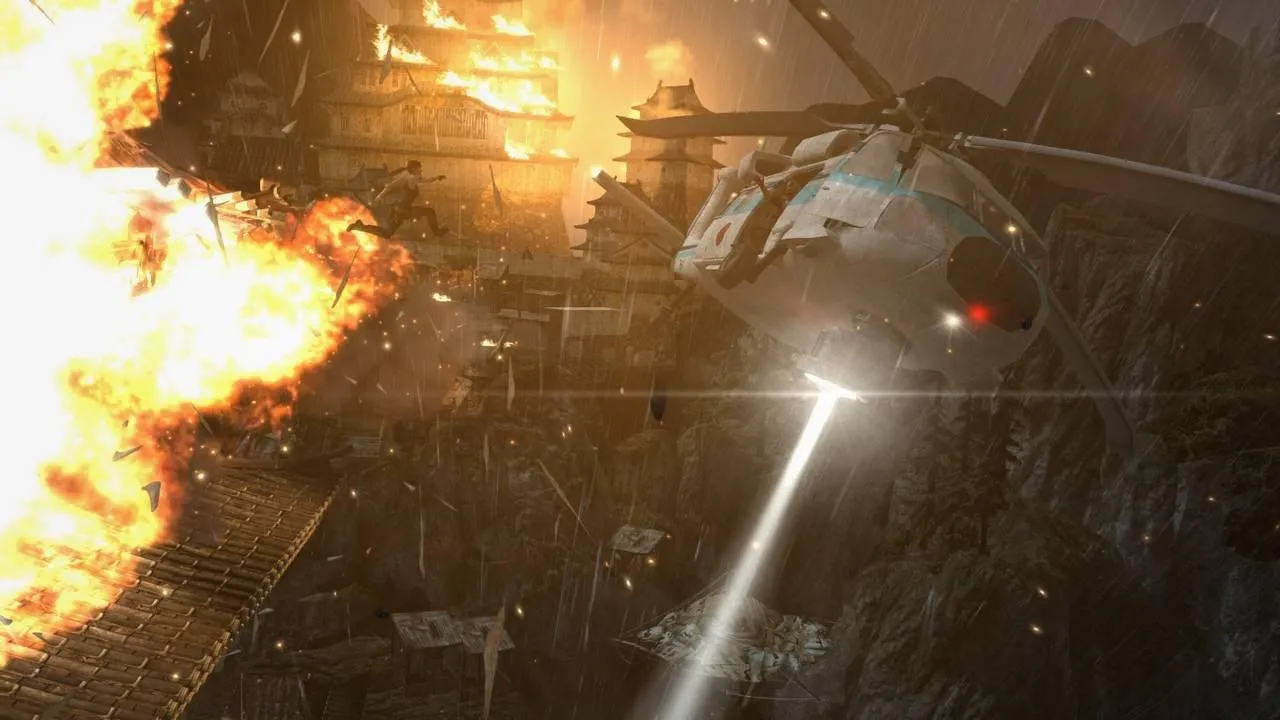
Tomb Raider (2013): A Survivor Is Born, But Is It a True Tomb Raider?
Contents
- The Genesis of a Legend…and an Action Hero
- A Focus on Combat
- A Visually Stunning, Yet Isolated World
- Lost in the Action: Where’s the Tomb Raiding?
- Puzzles and Quick Time Events: More Frustration Than Fun
- Survival…in Name Only
- Multiplayer: An Unnecessary Addition
- Conclusion: A Promising Reboot, But Not Without Flaws
The Tomb Raider franchise has captivated players for decades, following the adventures of Lara Croft since her debut in 1996. With over 13 titles and 35 million copies sold, the series boasts global acclaim. After 2008’s Underworld, the franchise went quiet, seemingly acknowledging a need for reinvention. This coincided with the rise of Uncharted: Drake’s Fortune on consoles, a new star that became a flagship PlayStation exclusive. This formidable competitor spurred Crystal Dynamics to release Lara Croft and The Guardian of Light (2010) as a stopgap while they focused on revitalizing Tomb Raider to compete with Uncharted. This led to the 2013 reboot, simply titled Tomb Raider, introducing a younger, less experienced Lara Croft. Does this reboot recapture the magic of classic Tomb Raider while holding its own against the newcomer Uncharted?
 Lara Croft in Tomb Raider (2013)
Lara Croft in Tomb Raider (2013)
The Genesis of a Legend…and an Action Hero
Tomb Raider (2013) begins with a young Lara Croft aboard the Endurance, embarking on an expedition to find the lost kingdom of Yamatai. Shipwrecked on a mysterious island inhabited by the brutal Solarii cult, Lara transforms from a naive archaeologist into a hardened survivor, fighting to stay alive and find her lost crew. Departing from previous games, this Tomb Raider embraces a gritty, cinematic style reminiscent of Hollywood action films, while still exploring Lara’s psychological journey. We witness her evolution from hesitant novice to determined survivor, reflected in her dialogue and actions.
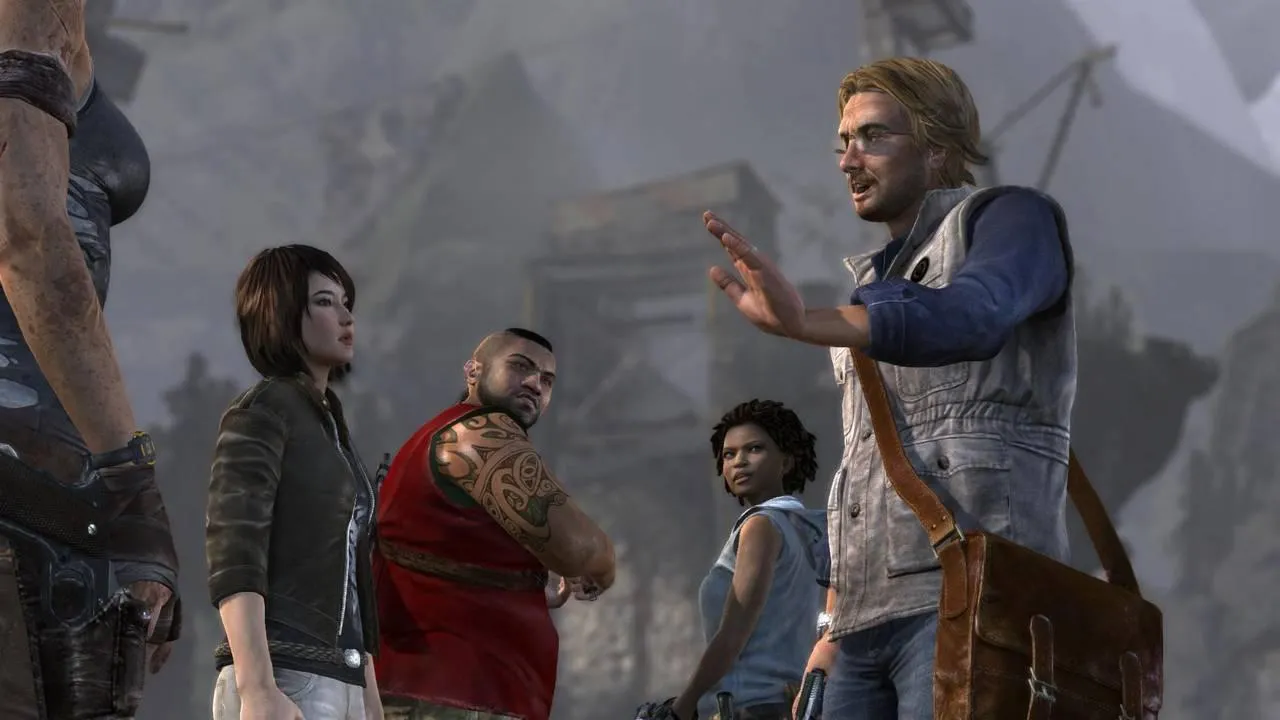 Lara Croft traversing the island
Lara Croft traversing the island
The game excels in integrating cinematic elements, showcasing thrilling set pieces like escaping a crashing plane or scaling cliffs during a blizzard. These sequences, reminiscent of Uncharted, add excitement without overwhelming the core gameplay.
A Focus on Combat
Perhaps surprisingly, Tomb Raider (2013) emphasizes action. Lara utilizes a bow, pistol, rifle, and shotgun, all upgradeable with salvaged materials. Combat scenarios vary, allowing for stealthy takedowns with the bow and arrow, strategic distractions, or all-out gunfights. The cover system functions smoothly, and the enemy AI is surprisingly competent, with melee combatants dodging and flanking. The destructible environments also force players to stay mobile. However, the boss battles are disappointingly simplistic.
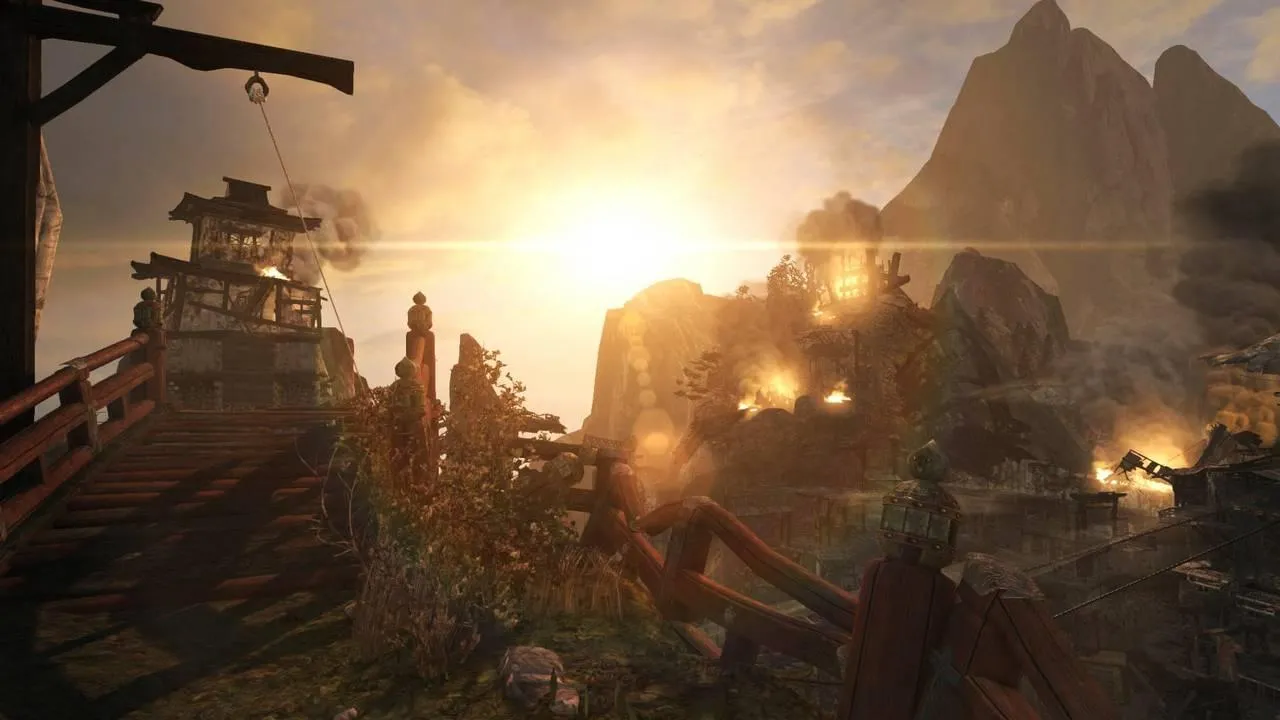 Lara Croft aiming her bow
Lara Croft aiming her bow
A Visually Stunning, Yet Isolated World
Despite its 2013 release, Tomb Raider‘s visuals remain impressive, showcasing breathtaking landscapes and detailed environments. The dynamic camera work enhances the cinematic feel, capturing stunning vistas. The sound design, however, is less remarkable. The music is repetitive and unmemorable, while the voice acting, though competent, lacks standout performances.
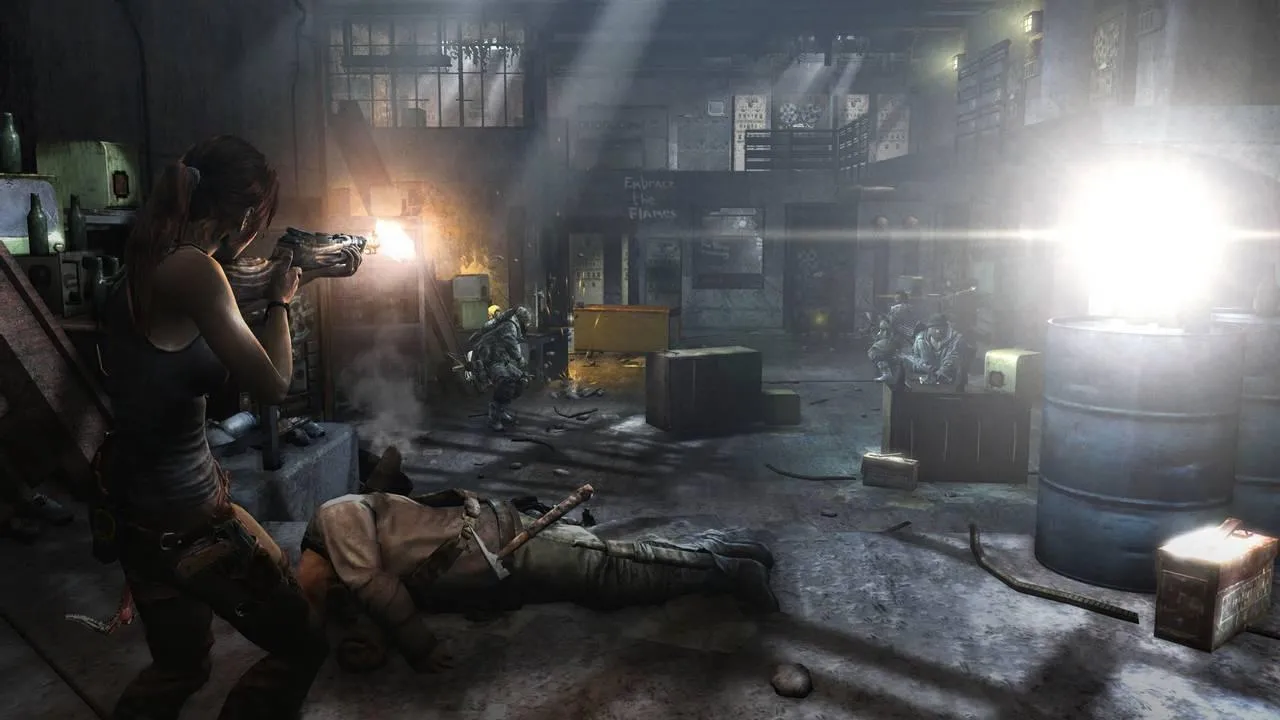 Lara Croft exploring a cave
Lara Croft exploring a cave
Lost in the Action: Where’s the Tomb Raiding?
Ironically, for a game titled Tomb Raider, exploration of actual tombs feels underwhelming. The game features only seven tombs, each completable in mere minutes. The rewards are minimal, offering only experience points, salvage, and collectible markers. The platforming, too, is a step back from previous titles. While not overly simplistic, it lacks the challenge and precision of earlier games. White-painted ledges and walls clearly indicate climbable surfaces, eliminating the need for exploration and problem-solving. The “Survival Instinct” highlights these areas, but its necessity is questionable.
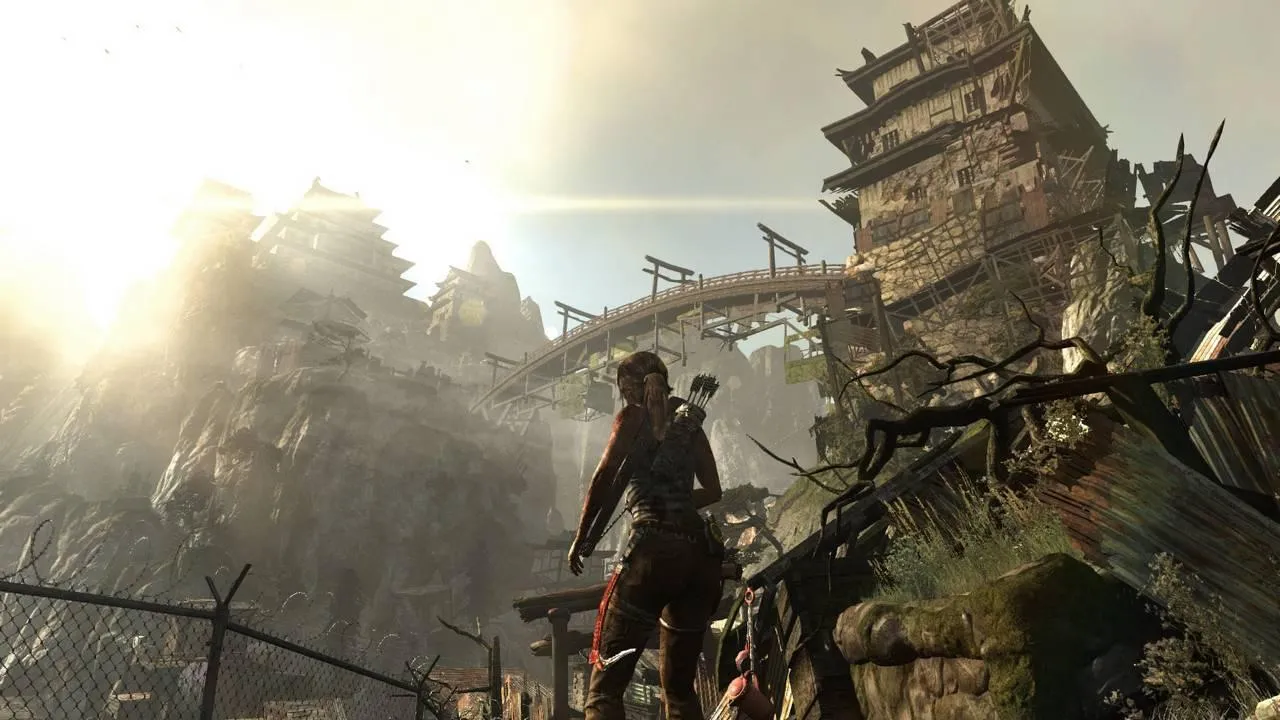 Lara Croft scaling a cliff face
Lara Croft scaling a cliff face
Puzzles and Quick Time Events: More Frustration Than Fun
The puzzles in Tomb Raider (2013) are disappointingly simple, revolving around using a rope to manipulate objects. The solutions are often obvious, and Lara provides hints if players get stuck. The overreliance on Quick Time Events (QTEs) further detracts from the gameplay. Boss battles devolve into repetitive QTE sequences, requiring little skill or strategy. Even mundane actions like prying open doors or turning cranks rely on QTEs, adding unnecessary interruptions.
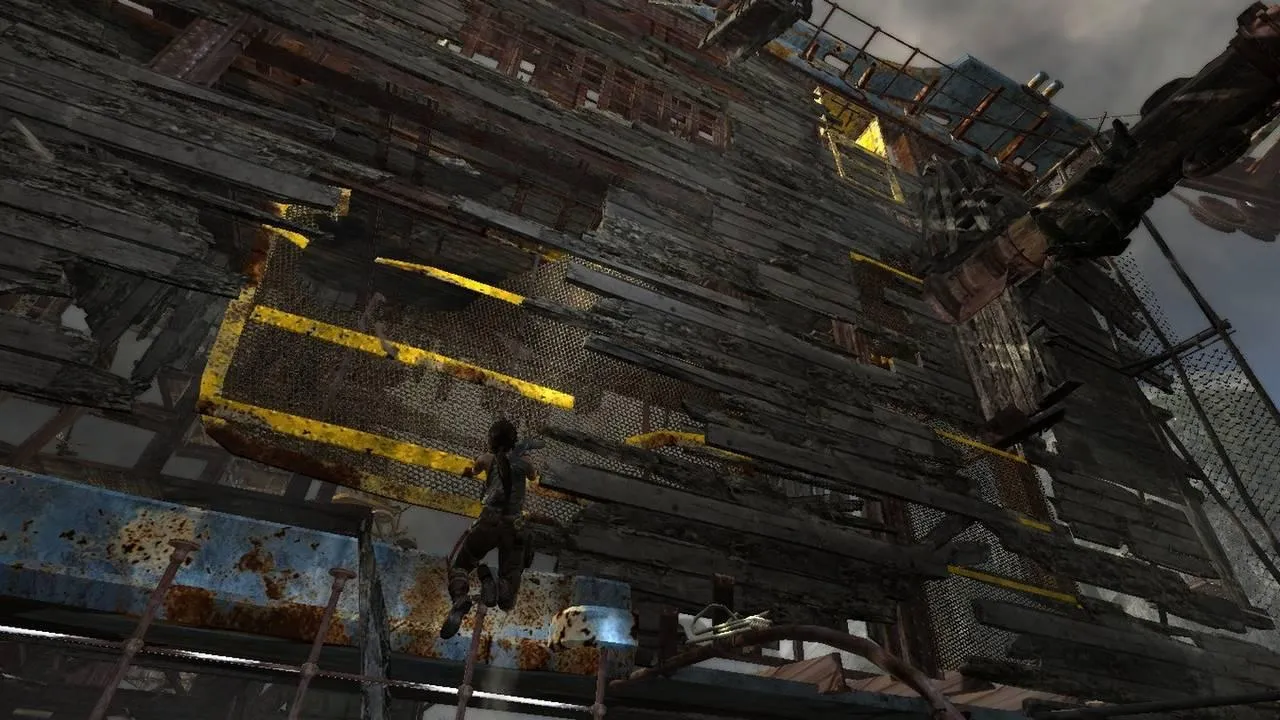 Lara Croft in a tomb
Lara Croft in a tomb
Survival…in Name Only
Despite its marketing emphasizing survival, Tomb Raider (2013) lacks meaningful survival elements. The skill tree offers “Survivor” skills, but these are largely inconsequential. Hunting and gathering yield only experience points, a missed opportunity to integrate crafting or resource management. The focus on action overshadows the survival aspects, relegating them to cutscenes rather than gameplay.
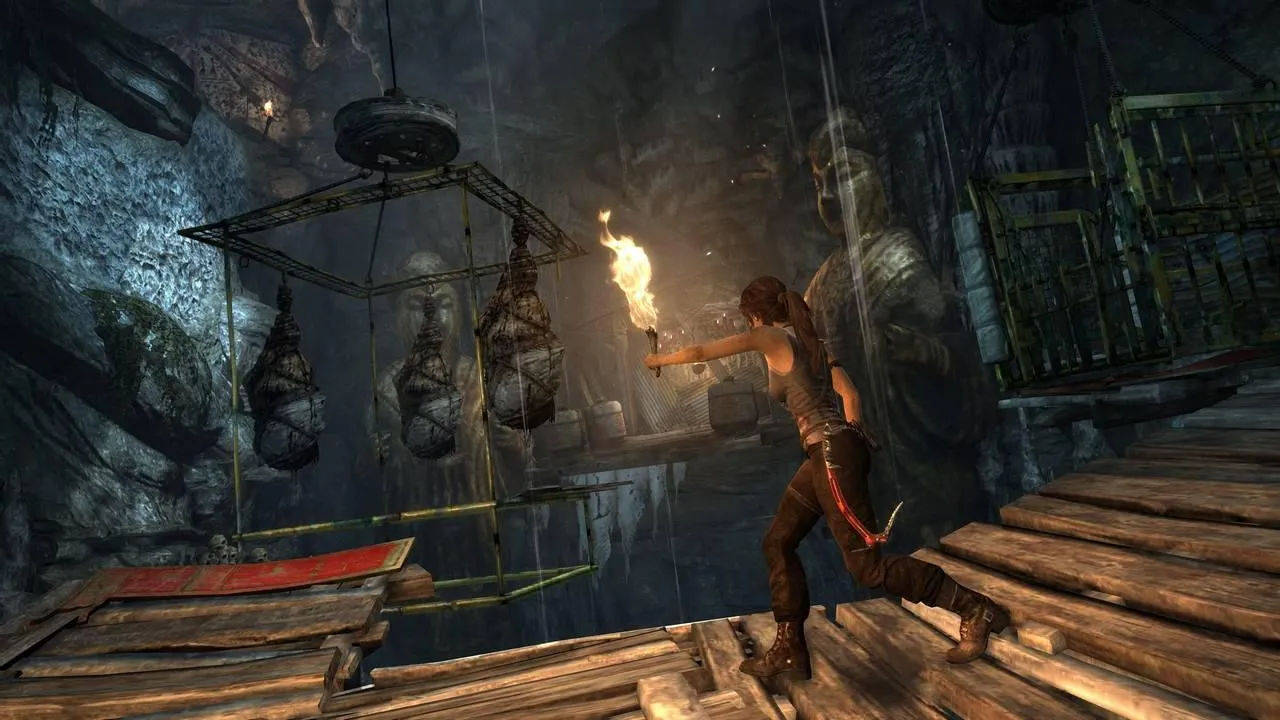 Lara Croft in a tense situation
Lara Croft in a tense situation
Multiplayer: An Unnecessary Addition
Tomb Raider (2013)’s multiplayer is a forgettable addition. While offering modes like Deathmatch, Team Deathmatch, Rescue, and Cry for Help, it lacks originality and suffers from a dwindling player base. The standard create-a-class and prestige systems offer little innovation, making the multiplayer feel like an afterthought.
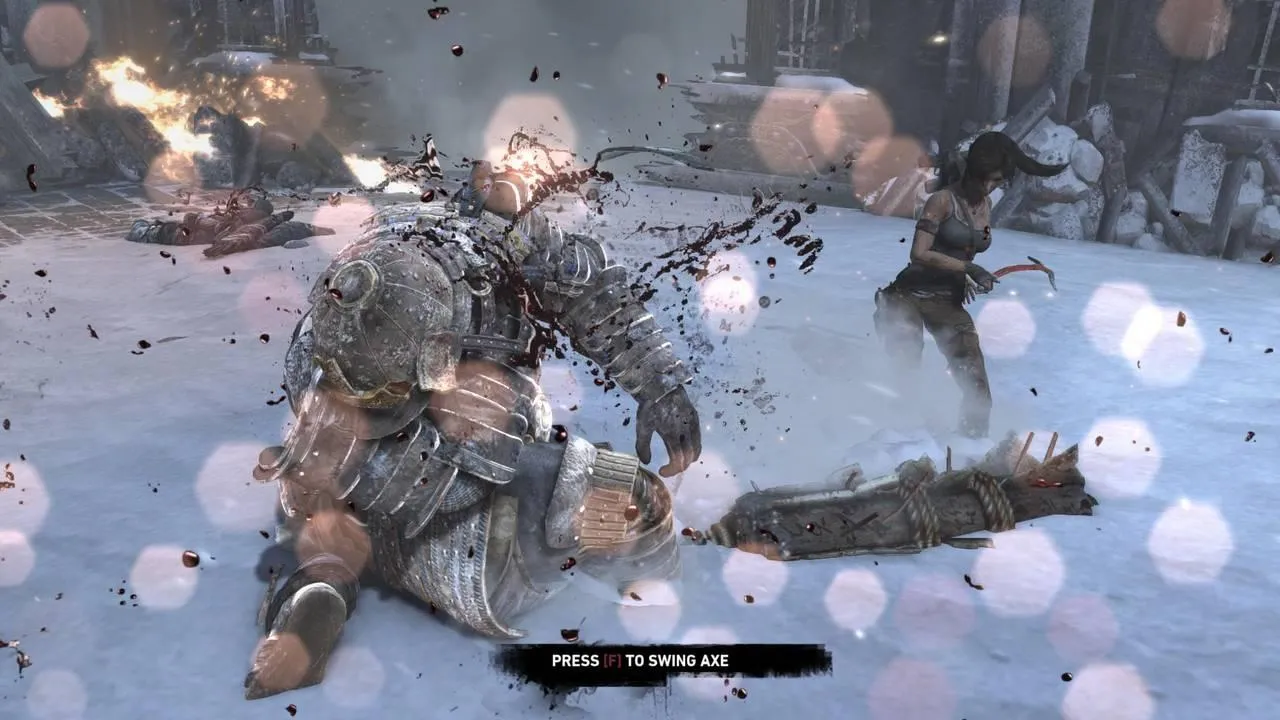 Lara Croft facing enemies
Lara Croft facing enemies
Conclusion: A Promising Reboot, But Not Without Flaws
Tomb Raider (2013) successfully reboots the franchise with a compelling origin story and stunning visuals. However, the overemphasis on action and cinematic set pieces comes at the expense of the series’ core elements: exploration, puzzle-solving, and survival. While Lara Croft’s transformation into a survivor is effectively portrayed, the gameplay doesn’t fully reflect this journey. The game succeeds as an action-adventure title, but it falls short of delivering a true Tomb Raider experience.





Comments (0)